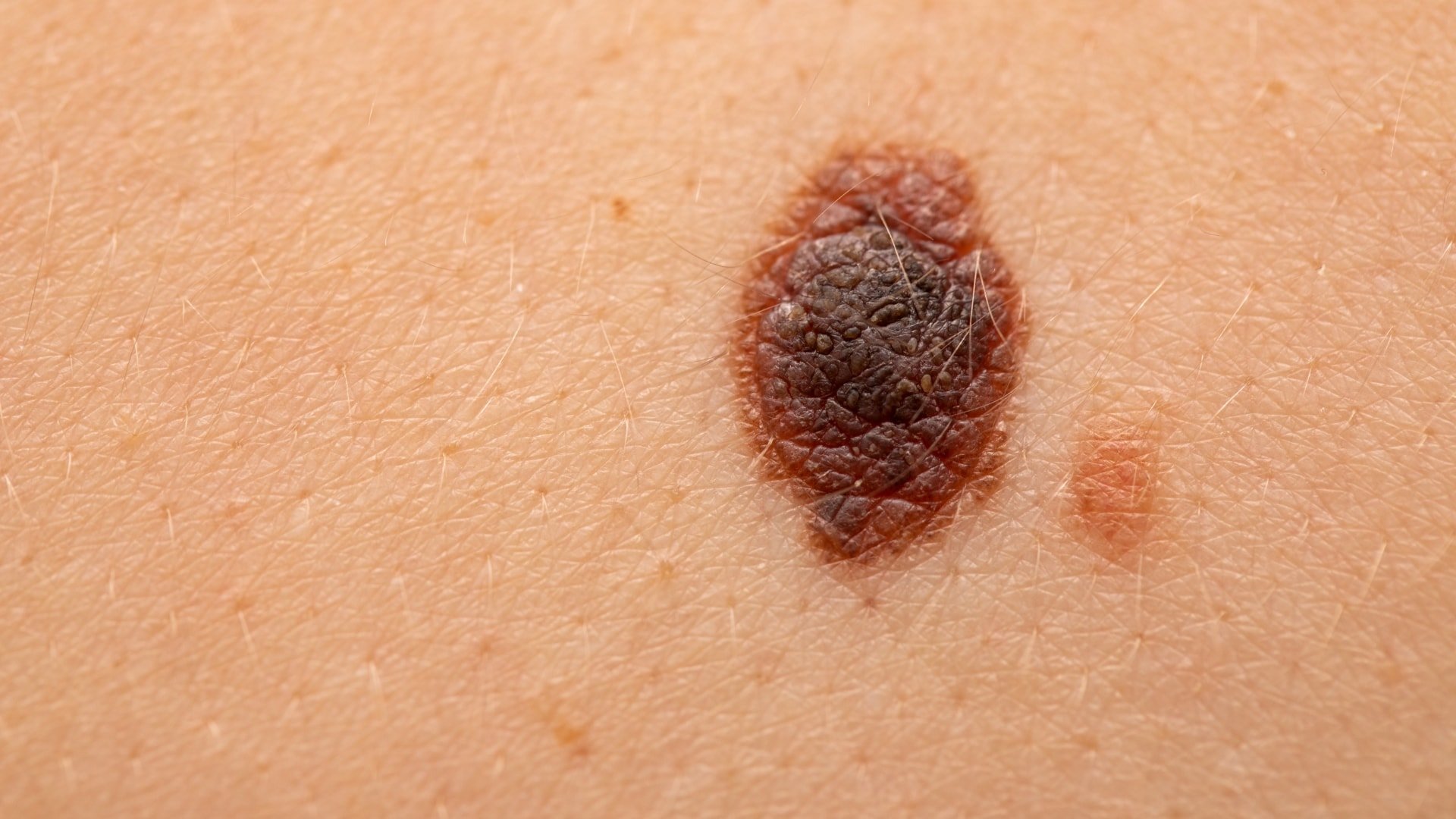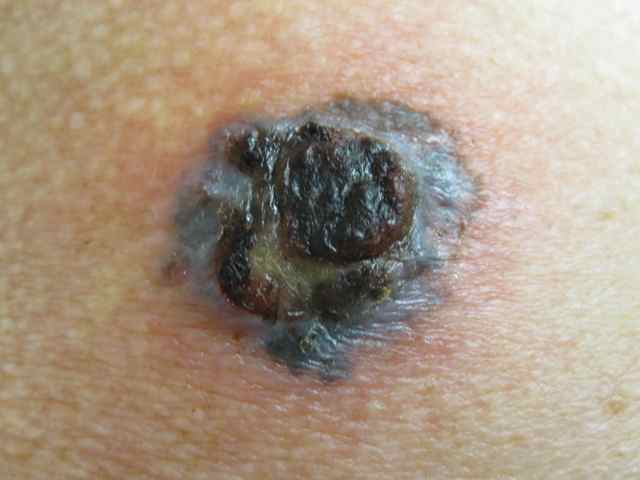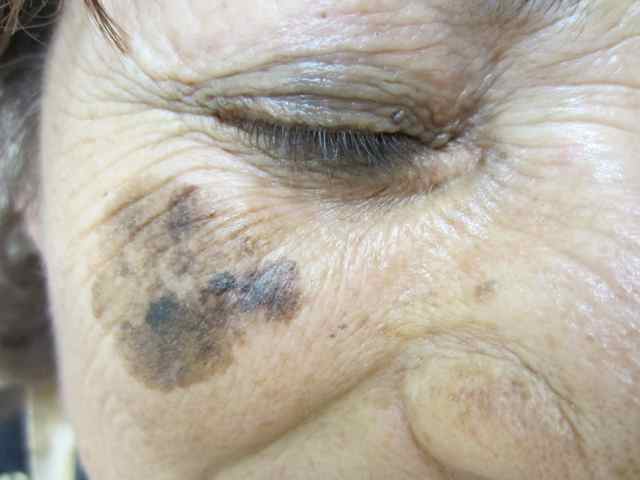Malignant melanoma is the most deadly of all skin cancers. The death rate is declining because melanoma is usually curable when detected in its early stages and patients are seeking help sooner.
Melanoma begins in melanocytes, the skin cells that produce the dark protective pigment called melanin that makes the skin tan. Since melanoma cells usually continue to produce melanin, the cancer appears in mixed shades of tan, brown, and black although it can also be red or white. Melanoma can metastasize (spread), making treatment essential. Melanoma may appear suddenly or begin in or near a mole, or another dark spot in the skin.

It is important to know the location and appearance of the moles on the body to detect changes early. Any changing mole must be examined by a dermatologist. Early melanoma can be removed while still in the curable stage.
Excessive sun exposure, especially sunburn, is the most important preventable cause of melanoma. Light-skinned individuals are at particular risk. Heredity also plays a part. A person has an increased chance of developing melanoma if a relative or close family member has had melanoma. Atypical moles (dysplastic nevi), which may run in families, and a large number of moles, can serve as markers for people at increased risk for developing melanoma. Dark skin is not a guarantee against melanoma. People with skin of color can develop melanoma, especially on the palms, soles, under the nails, in the mouth, or on the genitalia.
Check out this important video on melanoma called “Dear 16 year-old me”
Warning Signs of Melanoma Include:
- Changes in the surface of a mole.
- Scaling, oozing, bleeding, or the appearance of a new bump.
- Spread of pigment from the border of a mole into surrounding skin.
- Change in sensation including itchiness, tenderness, or pain.
The ABCDEs of Melanoma: When to Worry About Moles
Asymmetry – One half doesn’t match the other half in size, shape, color, or thickness.
Border irregularity – The edges are ragged, scalloped, or poorly defined.
Color – The pigmentation is not uniform. Shades of tan, brown, and black are present. Dashes of red, white, and blue add to the mottled appearance.
Diameter – While melanomas are usually greater than 6mm in diameter (the size of a pencil eraser) when diagnosed, they can be smaller. If you notice a mole different from others, or which changes, itches, or bleeds (even if it is small), you should see a dermatologist.
Evolution – The most important alerting sign is evolution or change in moles


Here is a selection of media articles quoting our renowned dermatologists Dr. Benjamin Barankin and Dr. Anatoli Freiman as they pertain to Malignant melanoma.
Toronto Dermatology Centre is located in Toronto, Ontario, and serves men and women in North York, Vaughan, Richmond Hill, York, Aurora, Thornhill, Mississauga, Scarborough, Brampton, Etobicoke, Pickering, Peterborough, Guelph, Kitchener, Oakville, Barrie and all of Greater Toronto (GTA).
Thinking of visiting Toronto’s premier skin clinic soon?
Fill out the inquiry form below and let us know your area of interest.
Call us today @ 416.633.0001
